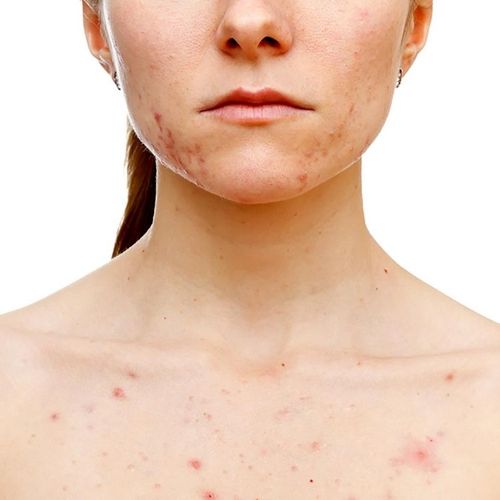Acne used to be rare in adults. No more. It can occur in people in their 20s and 30s—and some people continue to have acne into their 40s and 50s. In a recent study, 34% of participants who experienced adult-onset acne never had it during adolescence.
Doctors don't know why adult acne is on the rise, but one factor could be that we have busier lives and experience more stress than in the past. Stress triggers the release of hormones, such as testosterone (in women and men), and chemicals, such as neuropeptides, that increase skin oils and impair facial circulation. Contrary to popular belief, what you eat has little effect on acne.
Adult acne tends to affect deeper skin layers than adolescent acne. There's more inflammation and a greater risk of scarring.
THE ROOT OF ACNE
Acne occurs when hair follicles become plugged with oil and abnormally thick, sticky dead skin cells. Follicles are bulblike structures that encase hair roots and are attached to oil-producing glands. The oil travels up the hair shaft to the skin surface. Adults who produce excessive oil—due to high levels of testosterone, for example—may experience blockages in the follicles. The trapped oil (sebum) provides a haven for bacteria, which can cause inflammation and infection, resulting in acne.
About 54% of adults with acne are women, probably because their skin is more sensitive to testosterone's effects.
BEST TREATMENTS
To treat acne, start with step one, then move on to subsequent steps if there isn't substantial clearing in two to four weeks…
- Step 1. Benzoyl peroxide is the main ingredient in dozens of acne lotions, many of which are available over-the-counter. It has antibacterial /anti-inflammatory effects that usually work for mild acne. Use a 2.5% formula (such as Panoxyl AQ 2.5% Gel) for dry or sensitive skin...a 7% to 10% formula (such as Clearasil Maximum Strength medicated cream) for oily skin. Apply to affected areas once daily.
Helpful: Also apply a salicylic acid product (such as Salacid), which reduces swelling and inflammation. Use benzoyl peroxide and salicylic acid at different times of day, perhaps benzoyl peroxide at night and salicylic acid in the morning. The combination gives better results.
- Step 2. Retinoids, prescription topical products, such as Retin-A, Renova and Avita, help unblock hair follicles. These products may cause irritation. Apply twice weekly initially, then increase to once daily as skin adjusts.
Important: Benzoyl peroxide reduces the effects of retinoids. You can use them both, but not at the same time.
- Step 3. Combination ointment. Prescription products, such as Duac, contain both benzoyl peroxide and an antibiotic. Patients with mild-to-moderate acne who don't respond to other products usually do well with these.
- Step 4. Periostat. Available by prescription, this oral drug contains a low dose of the antibiotic doxycycline. It doesn't have antibiotic properties at this dose but does act as an anti-inflammatory. When used in combination with acne ointments, such as benzoyl peroxide or topical retinoids, it is very effective in most patients (though it may need to be taken for months).
- Step 5. Isotretinoin is a prescription vitamin-A derivative, taken in pill form, that can eliminate acne in most patients. It helps normalize hair follicles, so cells don't thicken and clog the pores, and can prevent acne from coming back.
Women who are pregnant or planning to become pregnant cannot take isotretinoin (Claravis) because it increases the risk of birth defects.
- Step 6. Smooth beam laser. About 40% of adults with severe acne experience substantial improvements with laser therapy. The 1,450-nanometer laser wavelength targets the sebaceous glands and can eliminate excess oil.
The procedure takes 15 to 20 minutes and is relatively painless—although there may be some irritation/redness for several days. Most patients require four to six treatments, usually given one month apart.
Cost: About $150-$500/treatment depending on the size of the area treated, not covered by insurance.
